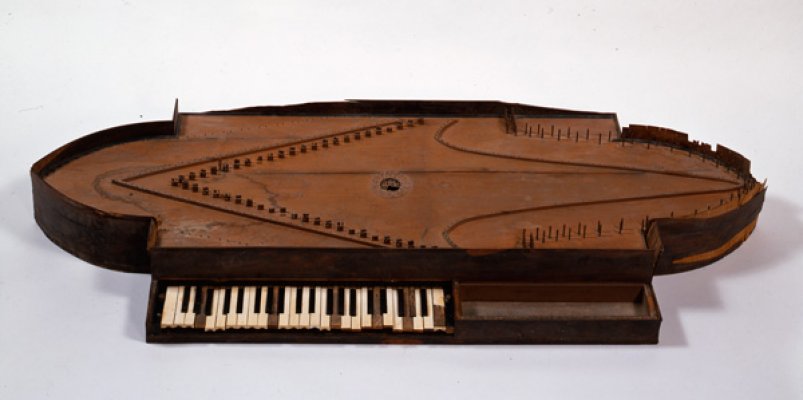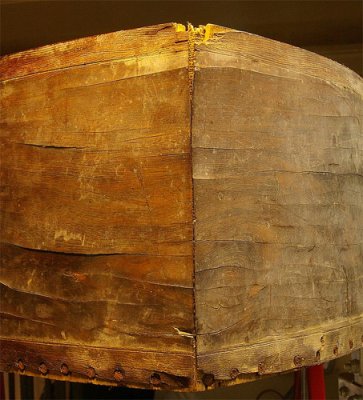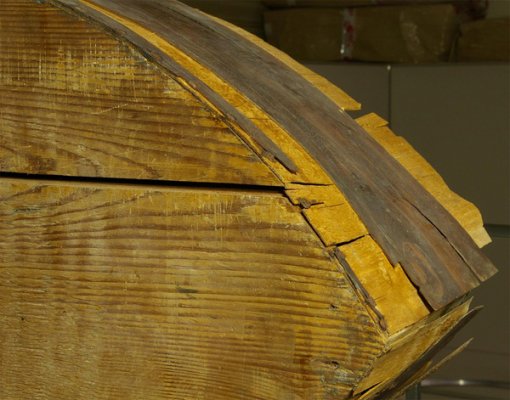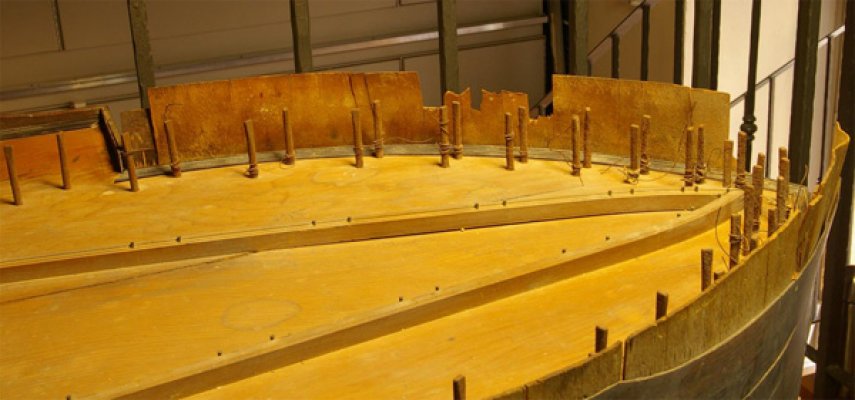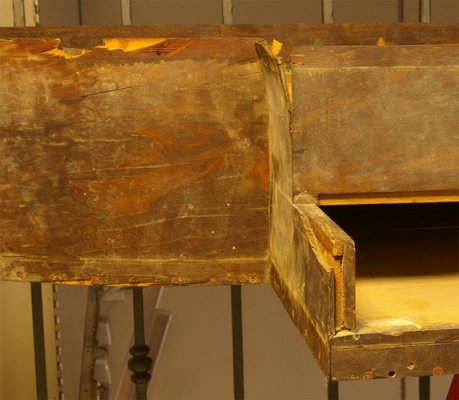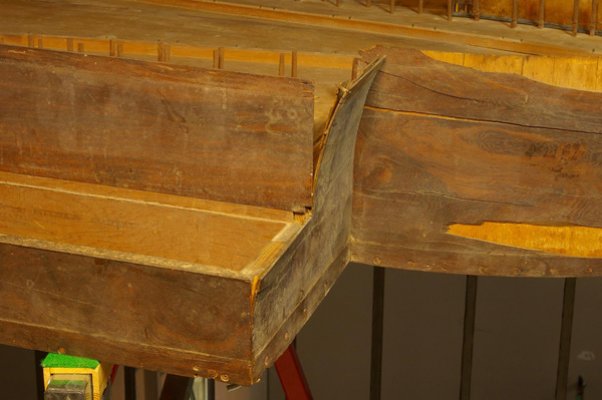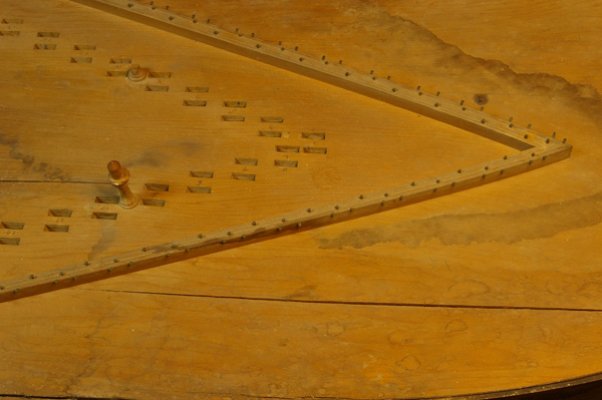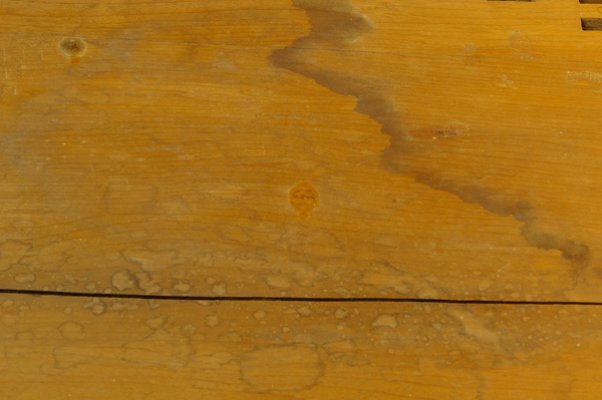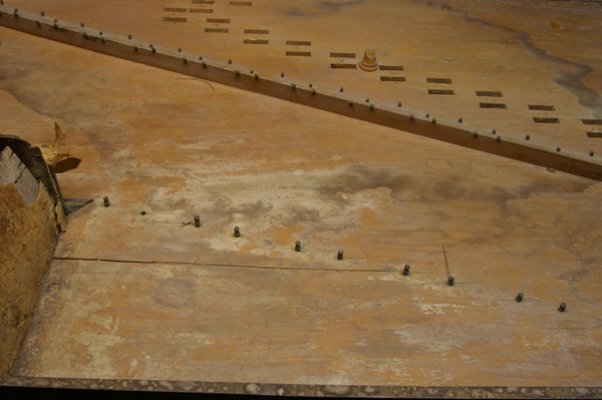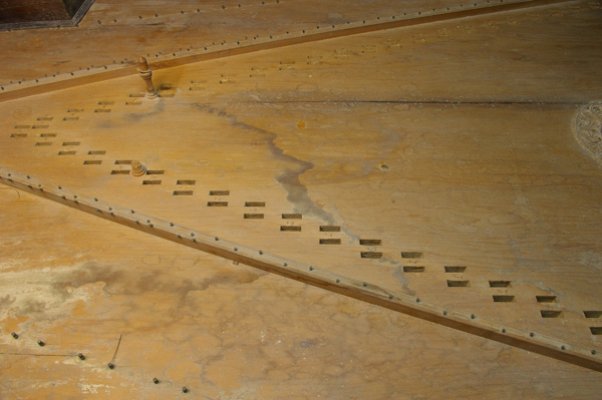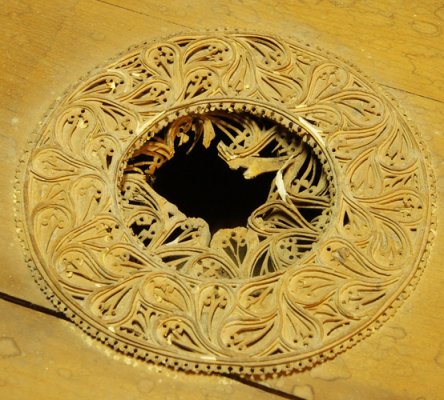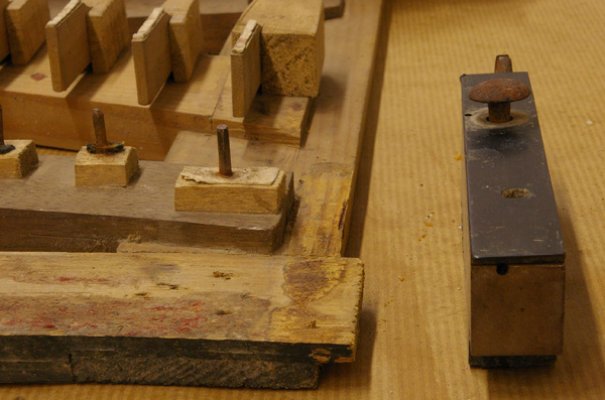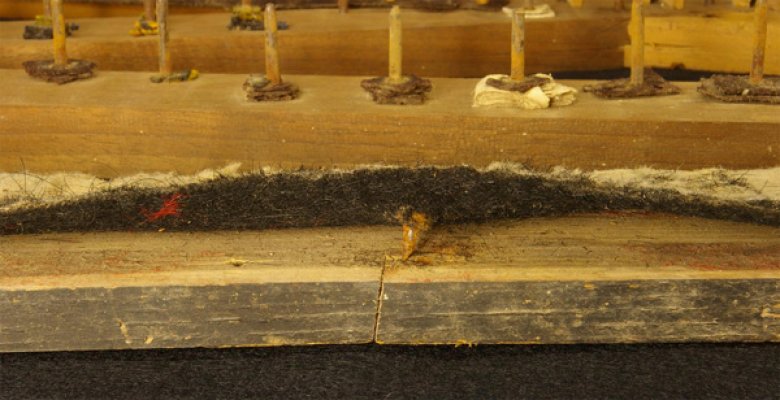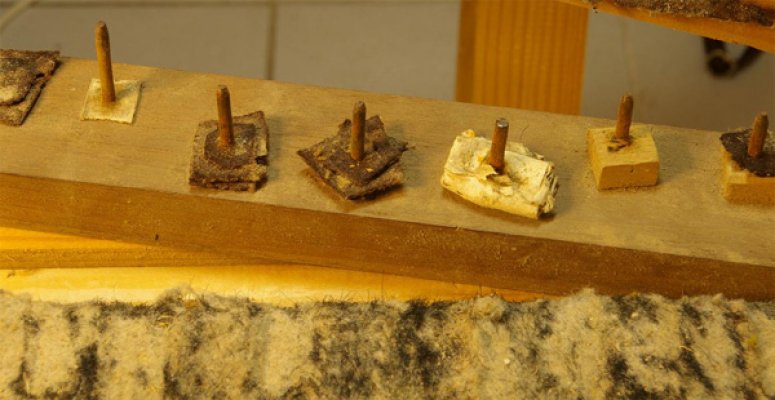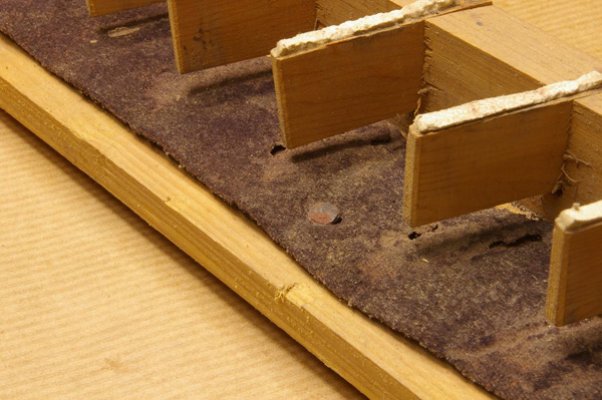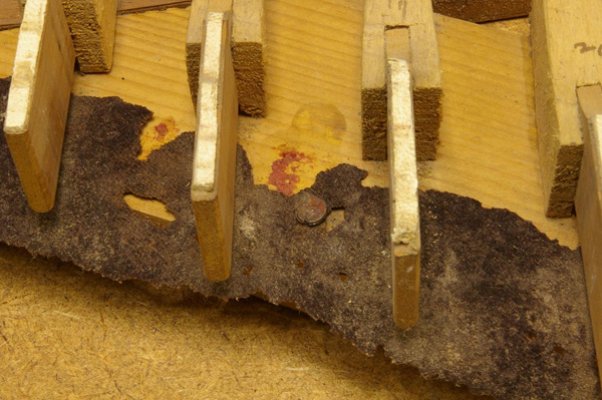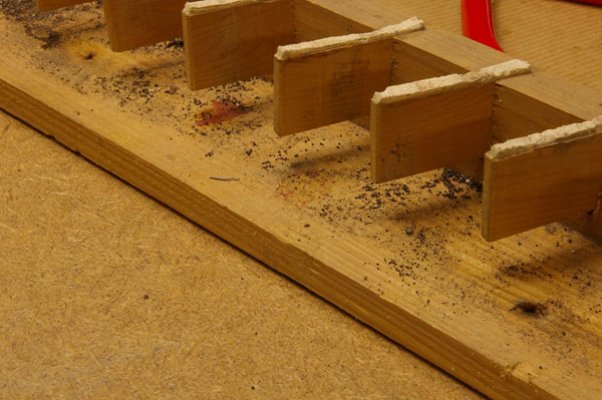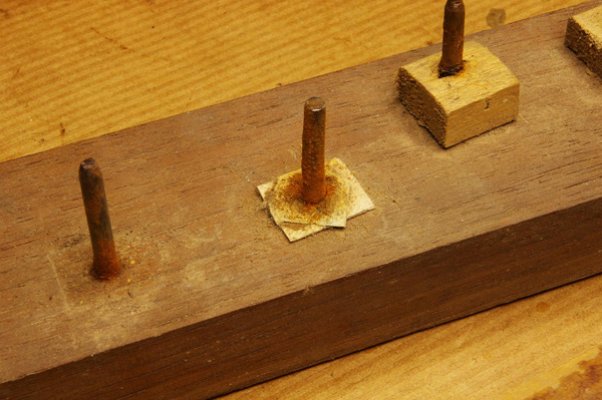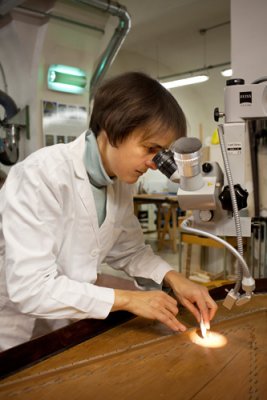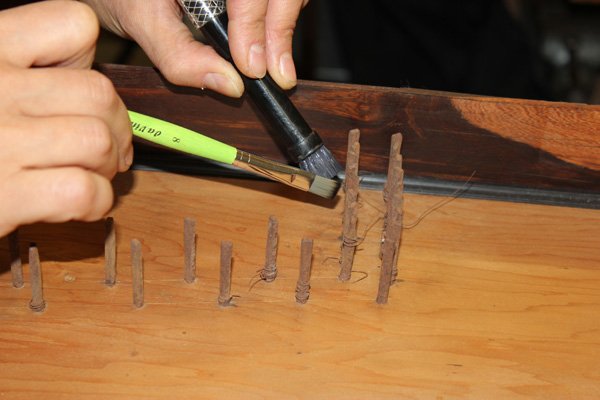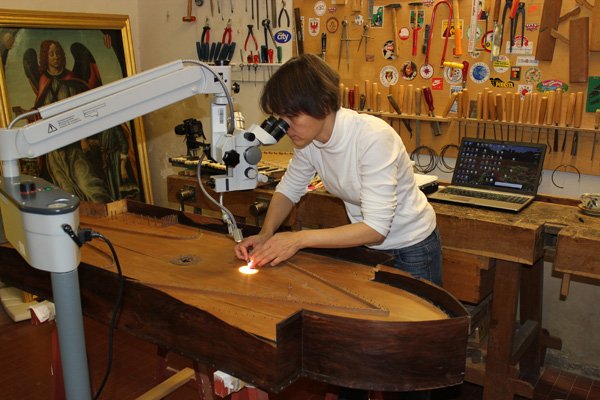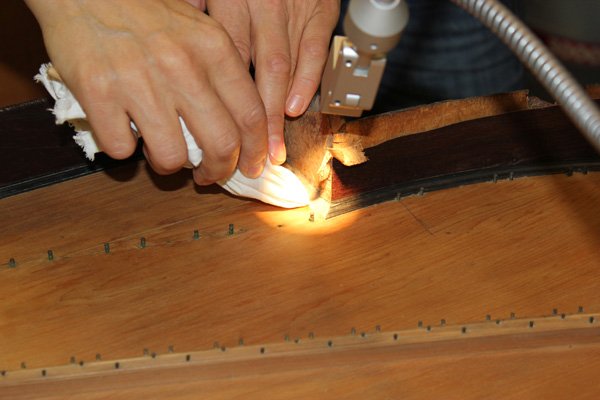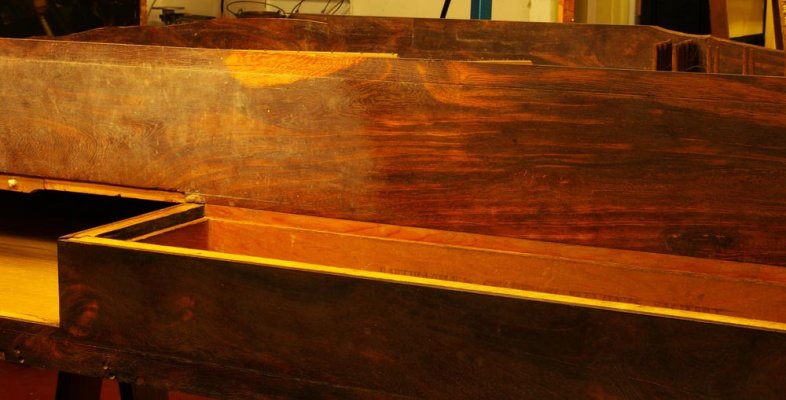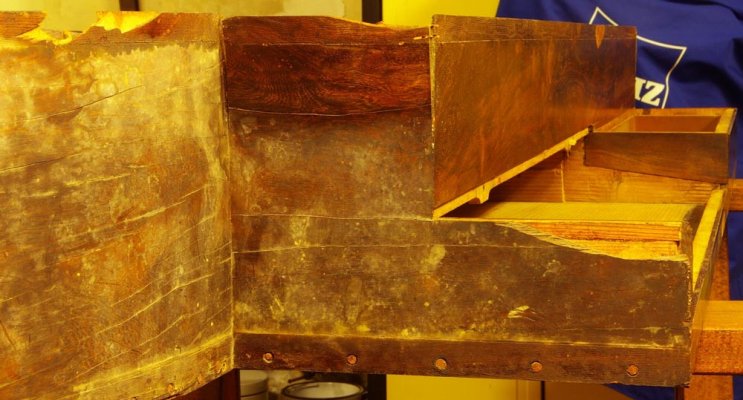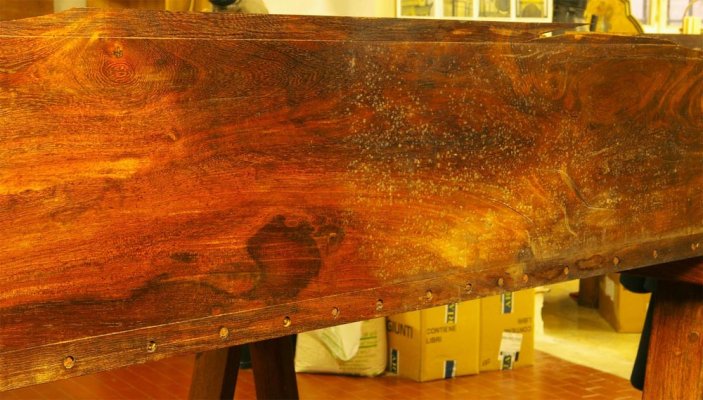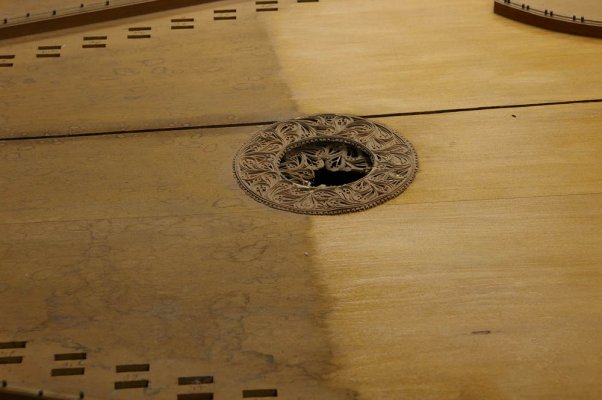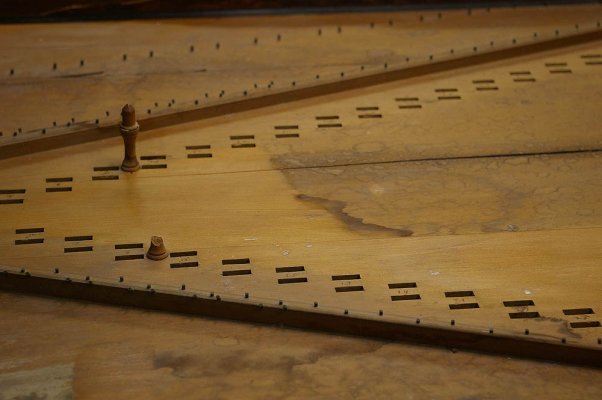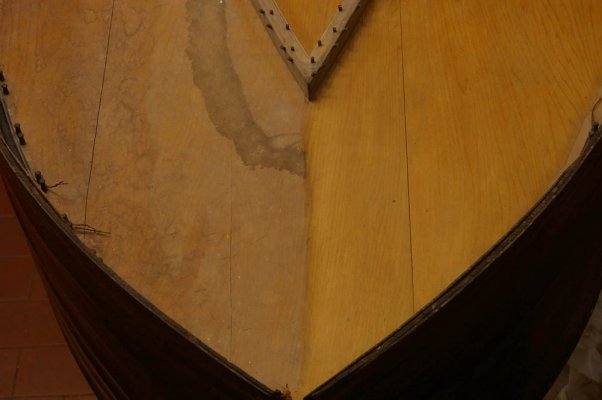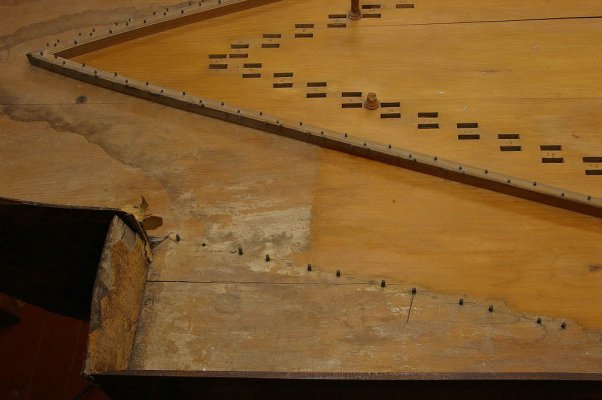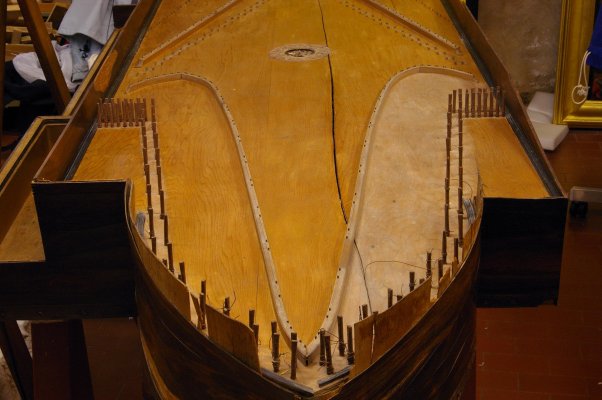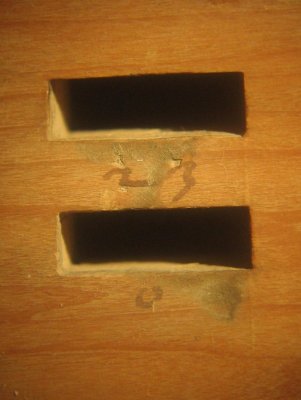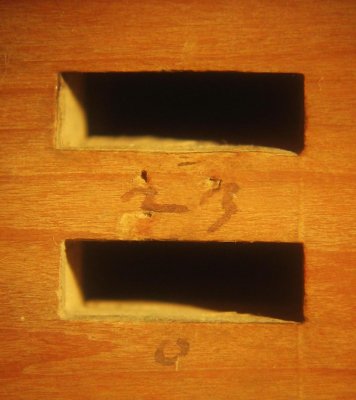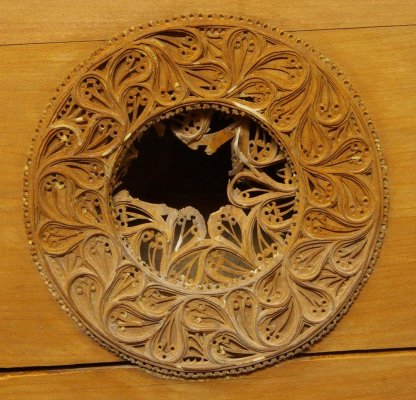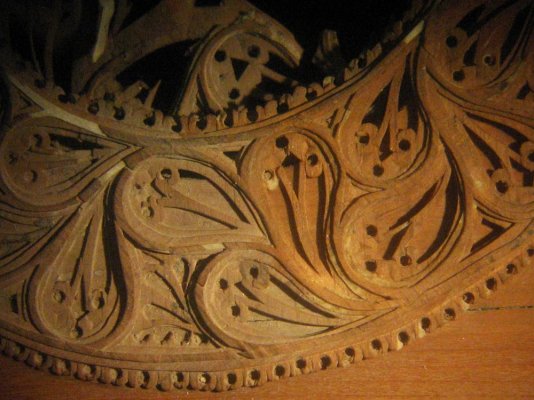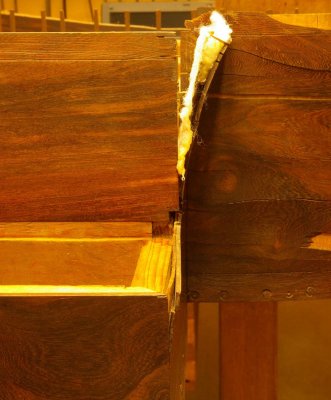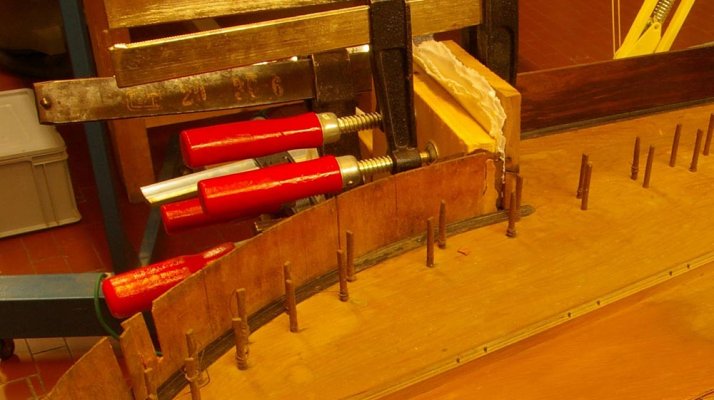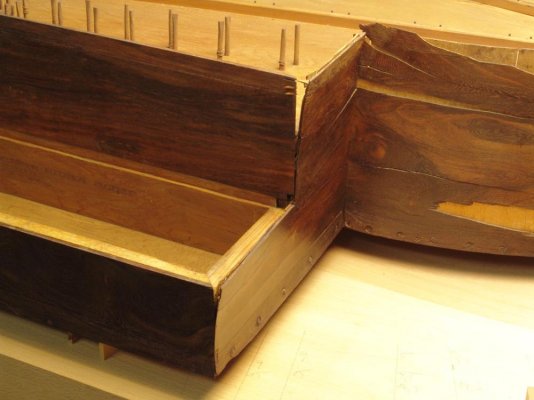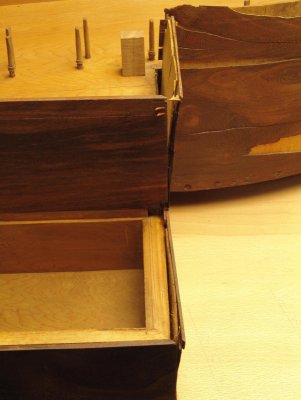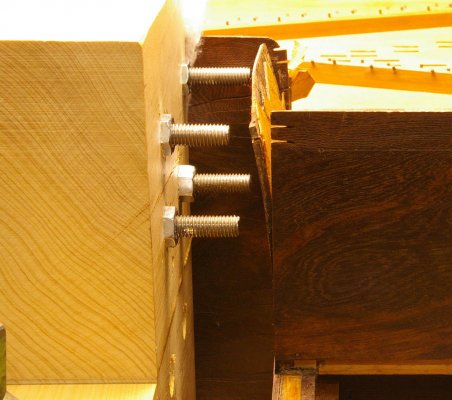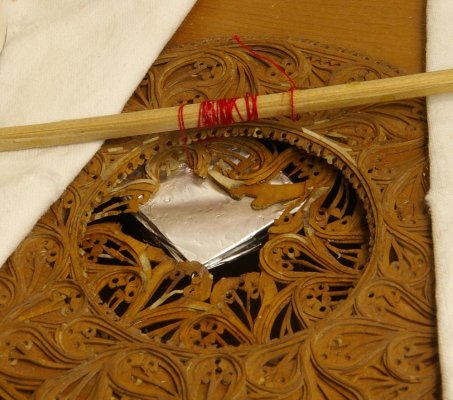The oval spinet from 1690 is the oldest surviving instrument by Bartolomeo Cristofori. It was rediscovered in the year 2000 when, after a long lasting legal court case, the inheritance of the Florentine antique dealer Stefano Bardini became property of the Italian state. Since 2001 the instrument has been exhibited in the Department of Musical Instruments inside the „Galleria dell'Accademia“ in Florence.
For more informationen about the instrument see Instrument copies
Preparation
In preparation for display at the museum in 2001 the spinet was cleaned of superficial dust and dirt. The research project included an x-ray examination of the whole instrument, infrared spectrophotometry of the glue particles, analysis of the metal parts with a scanning electron microscope (SEM), analysis of the various kinds of wood, both macroscopically and microscopically. Various experts carried out organological research. In addition a technical drawing using a CAD programm was made. The research results were published in 2002 and 2008.
Bartolomeo Cristofori. La spinetta ovale del 1690. A cura di Gabriele Rossi-Rognoni. Ministero per i Beni e le Attività Culturali. Soprindendenza Speciale per il Polo Museale Fiorentino. Sillabe 2002
Gabriele Rossi Rognoni: La spinetta ovale di Bartolomeo Cristofori del 1690. Un progetto di ricerca su uno strumento recentemente riscoperto. In: Restauro e conservazione degli strumenti musicali antichi. Nardini Editore 2008, pp. 101 – 112
Grant O’Brien: La conservazione della spinetta ovale di Bartolomeo Cristofori del 1690. Un approccio archeologico. In: Restauro e conservazione degli strumenti musicali antichi. Nardini Editore 2008. pp. 137 - 145
As part of the investigation into the construction techniques of the instrument and for recreating an idea of the sound, a faithful copy was built in 2003 (see Instrument copies, Oval spinet).
Aim of the restoration of 2012 was to improve its state of conservation.
Restoration
During the first part of the restoration all the cleaning work was carried out. The removing of the dirt was effected with hot water, by working under a magnifying glass and a microscope and by using a white cotton cloth wrapped around a small wooden stick, slightly wetted and renewed every few centimetres.
Before caring out the consolidation work on the spinet, the question of what kind of glue to use had to be decided. The research project in 2001 included infrared spectrophotometry of the glue particles. The results, published in 2002 revealed the presents of casein based glue on the inner surface of the right hand bentside walls made of rosewood as well as on the poplar support block on which these thin rosewood layers were glued to.
Because the choice of casein glue seemed at odds with the usual use of animal glue, the purpose was carefully investigated and new analysis needed to be carried out. The results of these new analyses, which had been carried out with the same method like the analyses in 2001 (infrared spectrophotometry), did exclude the use of casein based glue and affirmed animal glue as the only adhesive used in the 1690 oval spinet.
After all the cleaning work of the spinet had been finished, the loose and bent pieces had to be glued to the case. For all the gluing animal glue made from cow hide was used. The unglued and bent pieces to the right and left of the keyboard had to be softened with water and straightened before gluing them back to the case. For all the gluing the following technique was used: 1) The spinet was well fixed on a table. 2) Blocks of wood with holes were prepared and fixed with a certain distance to the piece to be glued. 3)Threaded iron rods were pushed through this holes. The inserted nuts made adjustment possible. 4) Between the iron rod and the spinet small wooden pieces and wedges were used. This system allowed a very selective gluing for all the various cracks. It enabled the gluing to the curved bentside as well as the gluing back of straight pieces with irregular surface.







